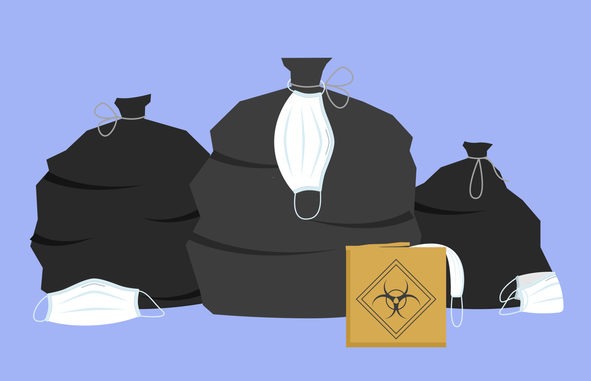
GP practices’ responsibilities – including checks, audits and disposal bags – when it comes to disposing of clinical waste
Clinical waste is that which could be hazardous, such as used dressings and needles and anything that might contain human tissue, blood or drugs.
Clinical waste collections
Either the GP practice itself or the area team will have a contract with a waste management company, which will make regular collections of any clinical waste from the practice.
There are provisions under paragraph 46 of the Premises Costs Directions 2013 for practices to apply to their area team to reimburse the cost of collections.
Pre-acceptance checks and audits
A waste management contractor will dispose of a practice’s clinical waste through incineration or at a treatment plant. These facilities are required to get detailed information from GP practices on what the waste is before they accept it; this is part of their ‘pre-acceptance checks’.
GP practices must provide audits of their waste to their contractors in order to have their waste accepted. Failure to provide an audit report could result in the Environment Agency stopping waste collection.
The practice can either collect the data itself or employ a third party to do so. The waste management contractor may offer to complete the audit for the practice, but may charge. The General Practitioners Committee has produced a self-audit tool to aid practices in collecting the data.
Your obligations
- GP practices are classified as ‘low risk’ and must complete the audit every five years.
- The practice does not have to provide information by completing the waste contractor’s template or pay a charge.
- Although the legal duty for the pre-acceptance checks lies with the waste disposal facility, under the Environmental Protection Act 1990, all producers have a ‘duty of care’ when dealing with clinical waste and ensuring disposal is safe.
- It is advisable that practices complete the audit when requested by their clinical waste collection company.
Waste disposal bags from patients
Local arrangements for the disposal of patients’ clinical waste will vary. Where clinical waste is from a patient treating themselves in their own home, the local authority can collect it; they can charge for this service.
In many areas the recommended method of disposal for some types of clinical waste, especially prescribed sharps boxes, is by return to the GP practice or pharmacy.
When a practice accepts sealed clinical waste disposal boxes/bags from patients, they have a legal duty to describe and classify the waste correctly. In most instances the practice should have sufficient understanding of the treatment their own patients are undergoing to enable them to do this.
Colour codes for sharp boxes
Although colour coding itself is not mandatory, it is used to help producers identify and segregate their waste, which is mandatory. So, you must segregate your waste and provide your waste contractor with the necessary information to ensure they can manage it appropriately.
European waste catalogue codes
The European waste catalogue is an EU-standard method of classifying waste.
Along with a written description of the waste, you must let your waste contractor know the relevant codes for each the different types of the waste you are disposing of. If you are using the self-audit toolkit, previously mentioned, you will see that the codes of each type of waste are already given in the right-hand column.



Be the first to comment